
IP65 vs IP67: What Are the Differences?
IP65 vs IP67: What Are the Differences?
IP65 vs IP67? The IP65 protection level provides complete dust protection for the device and can withstand low-pressure water jets from all directions, making it suitable for ordinary outdoor environments. Based on this, IP67 allows the device to be immersed in 1 meter of water for a short period of time (usually 30 minutes) without damage, making it suitable for scenarios with higher waterproof requirements.
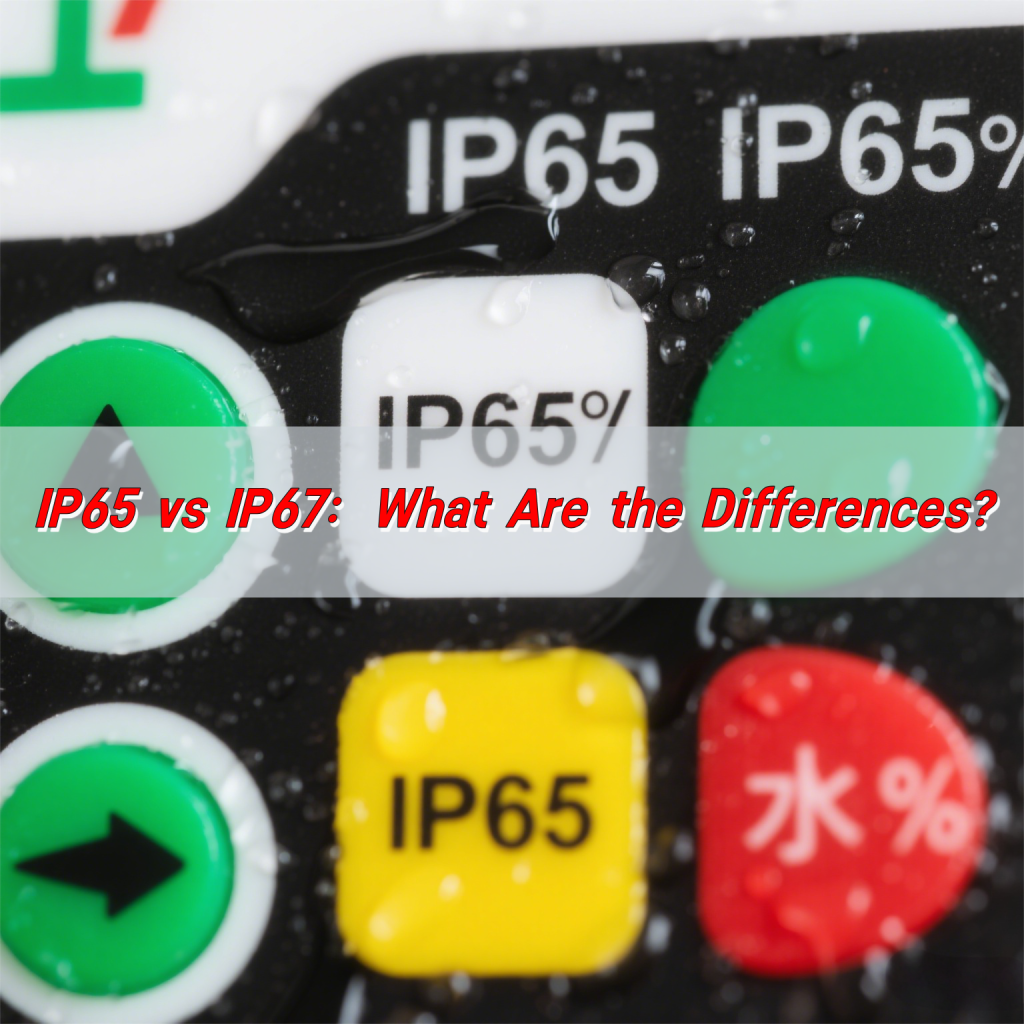
Which is better IP65 or IP67?
Both IP65 and IP67 are great options when it comes to protection against dust and water, but they offer different levels of security. Let’s break them down:
IP65 offers protection against dust (with no ingress of dust) and against water projected from a nozzle.
IP67, on the other hand, is more stringent. It not only offers the same dust protection as IP65 but also guarantees protection against immersion in water up to 1 meter depth for 30 minutes.
If you need a product that will be exposed to temporary submersion in water, IP67 is the clear winner. However, for general exposure to rain or splashes, IP65 might be perfectly sufficient.
Is IP65 ok for rain?
Yes, IP65 is definitely okay for exposure to rain. The IP65 rating means that the device is protected from low-pressure water jets coming from any direction. This is a typical feature for products exposed to outdoor conditions where rainfall is expected but submersion in water is not.
So, if your membrane switch or other equipment will mostly face rain or brief splashes, IP65 is more than capable of handling those situations.
However, if the device will be exposed to heavy rainfall for extended periods, or if you’re concerned about more intense weather conditions, you may want to consider an IP67-rated product to ensure additional protection.
Can IP65 be used outside?
Yes, IP65 can absolutely be used outside. It is designed to withstand exposure to dust and rain, making it ideal for many outdoor environments. For instance, you can use IP65-rated products in locations where they might face rainfall, dirt, or even brief splashes from water. These can include street signs, outdoor displays, or membrane switches used in exterior control panels.
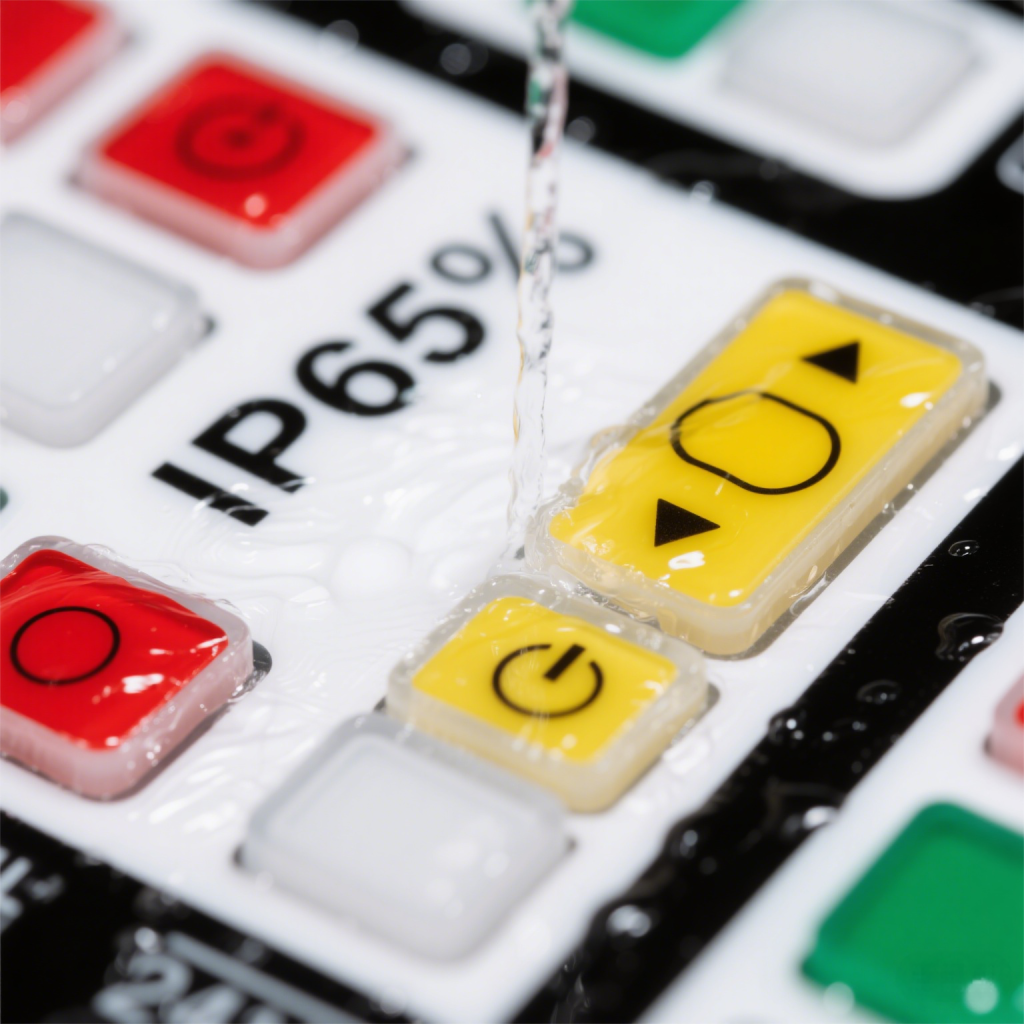
However, keep in mind that IP65 is not rated for complete immersion in water. So if your device will be exposed to heavy rain or water spray for prolonged periods, or submerged in water, consider opting for a higher protection rating like IP67.
Is IP67 completely waterproof?
No, IP67 is not completely waterproof, but it does offer a high level of protection against water. IP67 ensures that the device can withstand immersion in water up to a depth of 1 meter for up to 30 minutes. This level of protection is enough for situations where the equipment might be dropped into water or exposed to heavy rain and splashing.
That said, IP67 does not mean the device can handle being submerged in water indefinitely or at greater depths. It’s important to note that once you exceed the 1-meter depth or the 30-minute duration, the protection may not hold up.
What IP rating is fully waterproof?
There is no such thing as a fully waterproof rating when it comes to IP ratings. However, IP68 is often referred to as providing the highest level of water protection. An IP68-rated device can handle continuous immersion in water, typically beyond 1 meter, depending on the manufacturer’s specifications. This makes IP68 suitable for devices that need to be completely submerged, such as underwater cameras, diving equipment, or other highly specialized applications.
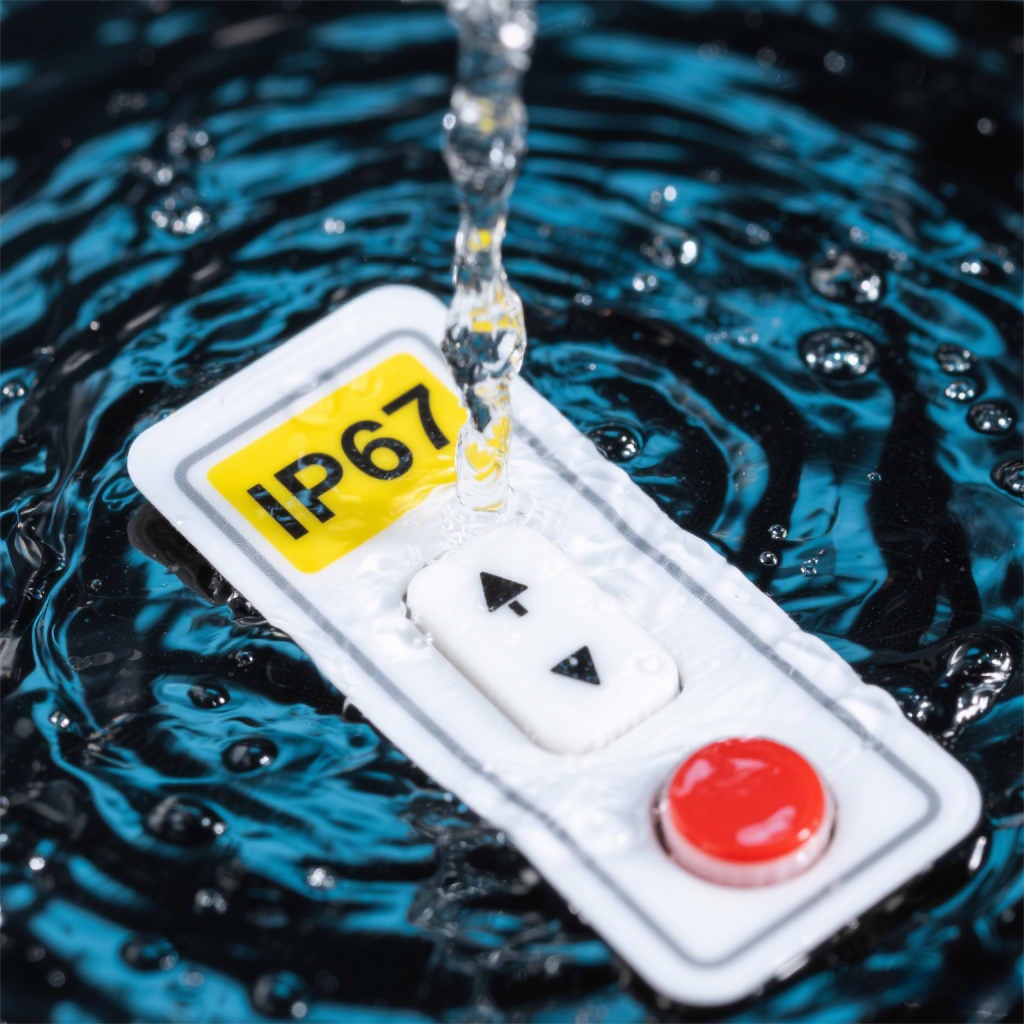
If you’re looking for maximum water resistance, you might consider IP68. But, for most practical applications, IP65 and IP67 provide ample protection.
IP65 vs IP67: Which one to choose for membrane switch?
Choosing the right IP rating for your membrane switch depends on its intended environment. If your membrane switch will be used in areas that are prone to dust and water splashes, an IP65-rated membrane switch should work just fine. It’s a great choice for industrial environments or situations where you’re not expecting submersion in water.
However, if you’re working in an environment where the switch might be exposed to temporary submersion in water, such as an outdoor control panel in an area prone to flooding, an IP67-rated membrane switch would be more appropriate.
An IP67 membrane switch ensures that it can handle even more extreme conditions, such as accidental drops into water or sustained exposure to rain. This level of protection offers peace of mind that your device will continue to function properly under harsh conditions.
Are IP66 and IP67-rated membrane switches suitable for outdoor applications?
Both IP66 and IP67 offer strong protection for outdoor applications. IP66 provides protection against strong water jets, making it suitable for environments where water spray is frequent but immersion isn’t a concern.
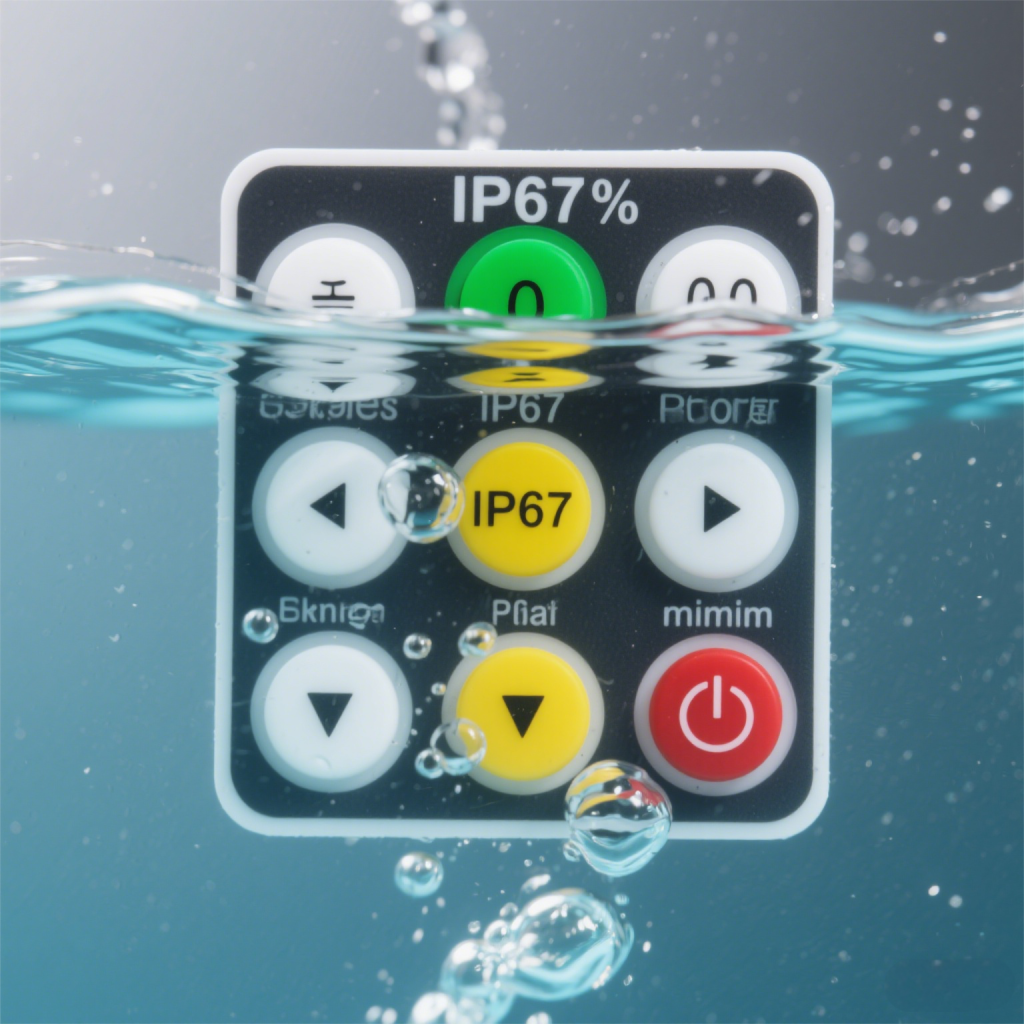
IP67, as we’ve discussed, offers protection against temporary submersion in water, which makes it even better for outdoor locations where you might face sudden rainfall or flooding.
For most outdoor applications, IP66 or IP67 should work perfectly well, depending on whether the device needs to resist immersion in water or just withstand rain and splashes.
What else should I consider when selecting a membrane switch?
Choosing the right membrane switch involves more than just considering the IP rating.
- Environmental Conditions: Think about the environment in which your membrane switch will operate. These factors may require additional protective features beyond just the IP rating.
- Material Durability: Ensure that the materials used in the membrane switch are resistant to the conditions in your environment. Look for switches with UV-resistant overlays if they will be exposed to sunlight.
- User Experience: Consider how easy it will be for users to operate the membrane switch in the environment. Does it need tactile feedback for a better user experience?
- Longevity and Reliability: Select membrane switches that are designed for long-lasting durability, especially if they are meant for high-frequency use or harsh conditions.
- Customization: Some membrane switches offer custom designs or additional features like backlighting or custom key layouts. This can be particularly important if the switch will be part of a larger system or if visual cues are necessary.
Conclusion:
In summary, the choice between IP65 and IP67 depends on the level of protection your device needs. While both ratings offer excellent protection against dust and water, IP67 is the better option if your equipment will be exposed to immersion in water, whereas IP65 works well for rain and splash protection.
When selecting a membrane switch, remember to consider not only the IP rating but also environmental factors, material durability, and user requirements. Whether you choose IP65 or IP67, both ratings offer reliable protection for your device, allowing it to function in demanding environments.
For more information or to inquire about high-quality, durable membrane switches for your projects, reach out to us at sales@best-membraneswitch.com
How to clean silicone rubber? Silicone Rubber Membrane Switch
How to clean silicone rubber? To clean the silicone rubber membrane switch, use a mild detergent and a soft cloth. First, turn off the power and remove the keycaps. Use a slightly damp soft cloth to gently wipe the switch and surrounding areas to remove dust and stains. If the stains are stubborn, wipe with ...

Mechanical vs Non Mechanical Keyboard: What’s the Difference?
The main differences between mechanical keyboards and non-mechanical keyboards (such as membrane keyboards) are structure, feel, durability and sound. Each key of a mechanical keyboard has an independent switch, providing a clear feel and tactile feedback, strong durability, louder sound, and is suitable for gamers. Non-mechanical keyboard keys contact the circuit board through a rubber ...
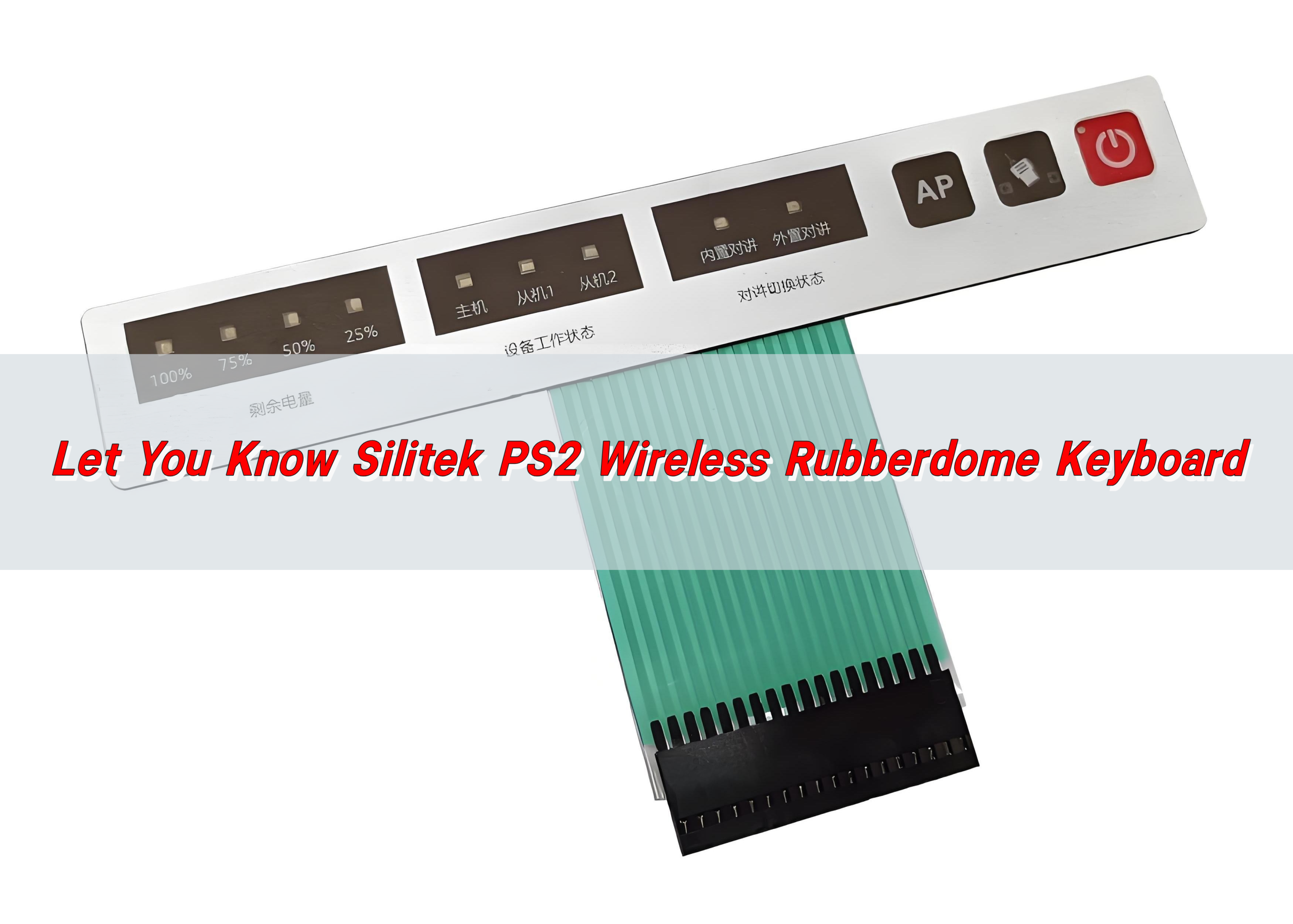
Let You Know Silitek PS2 Wireless Rubberdome Keyboard
Silitek PS2 Wireless Rubberdome Keyboard is a keyboard that combines PS/2 interface and wireless transmission technology. It uses rubber dome as the elastic element of the key to provide a stable input experience. The PS/2 interface ensures stable signal transmission, while the rubber dome design brings good tactile feedback and a comfortable pressing experience. What ...
Contact us online